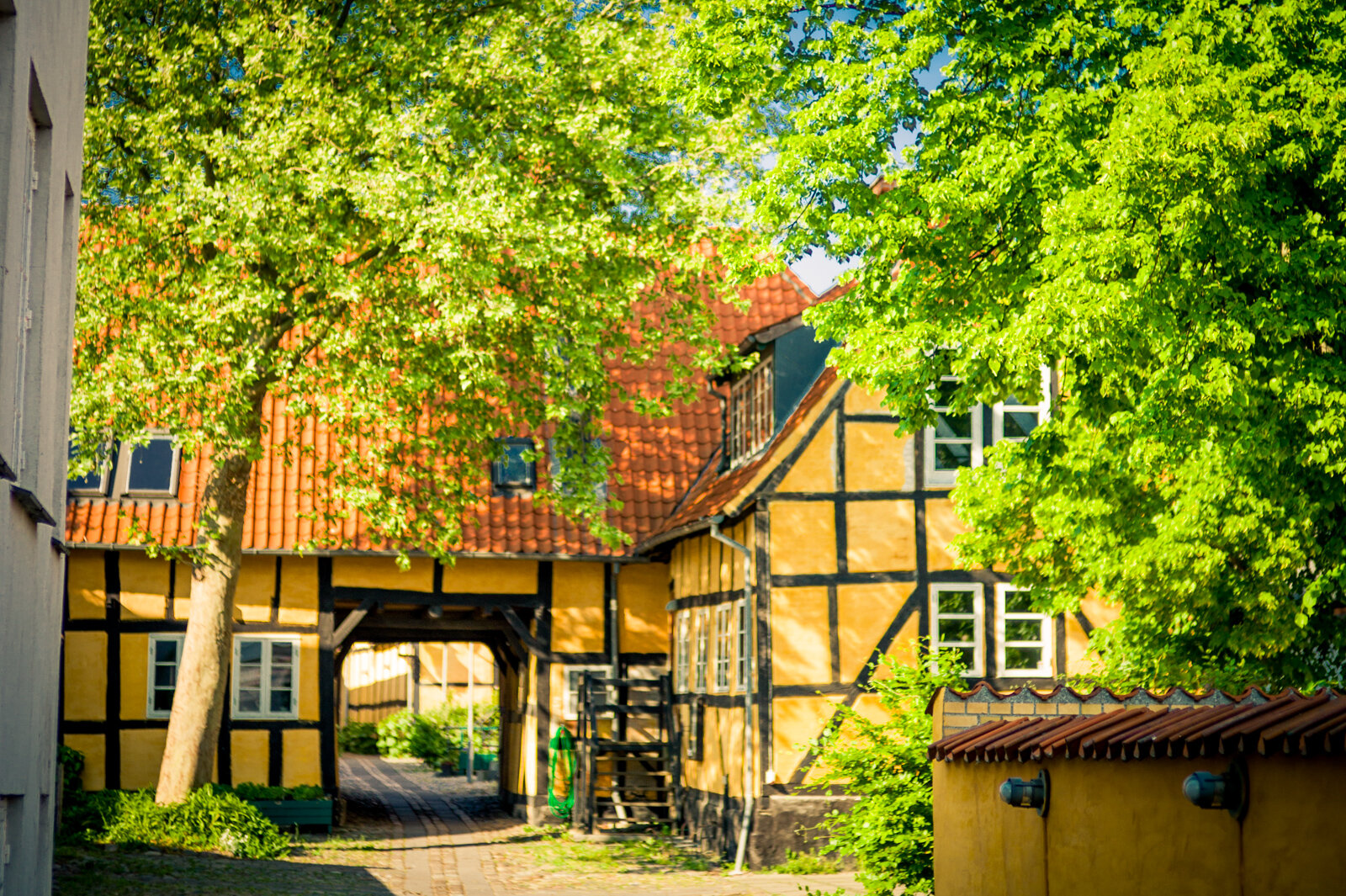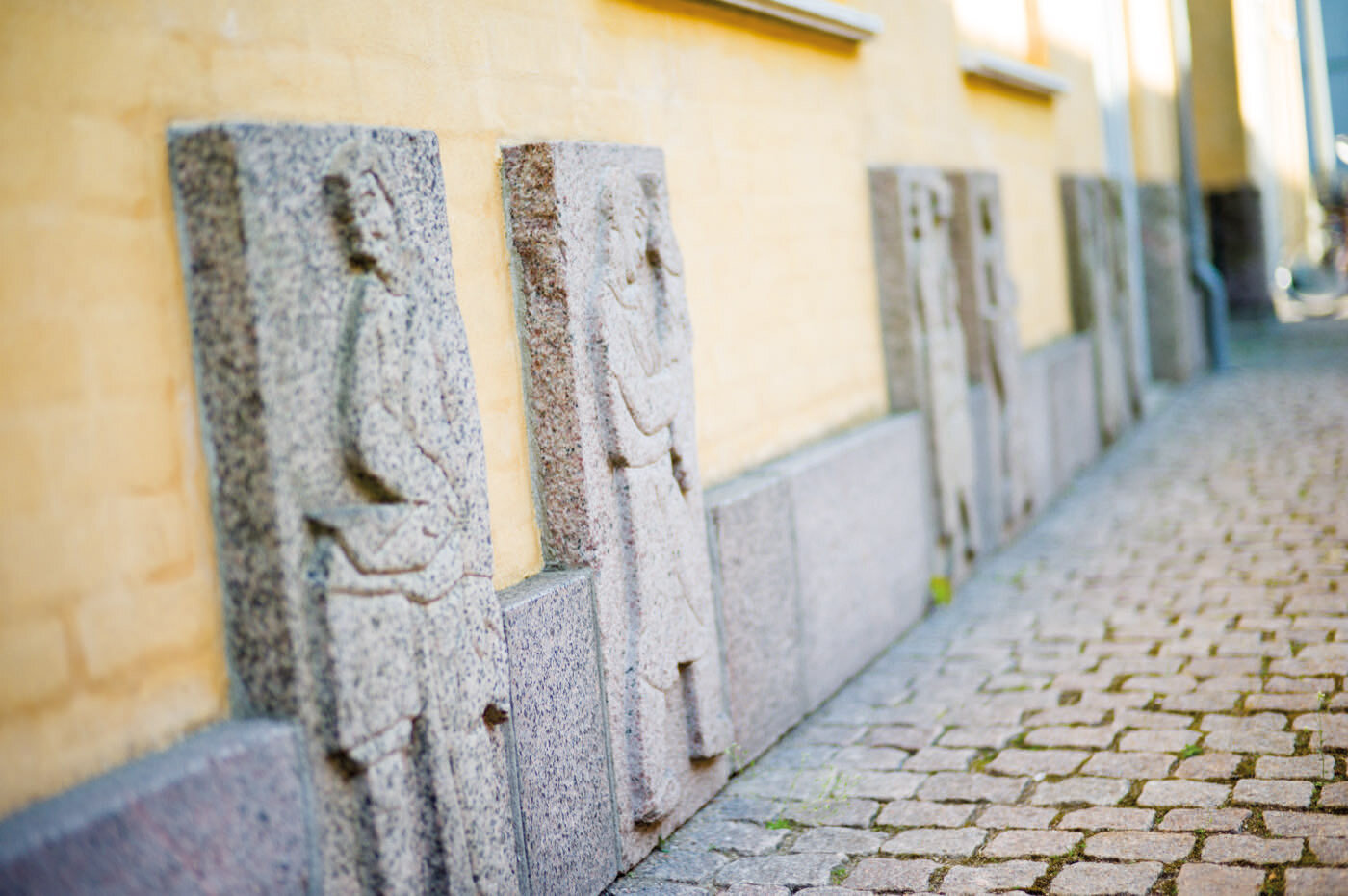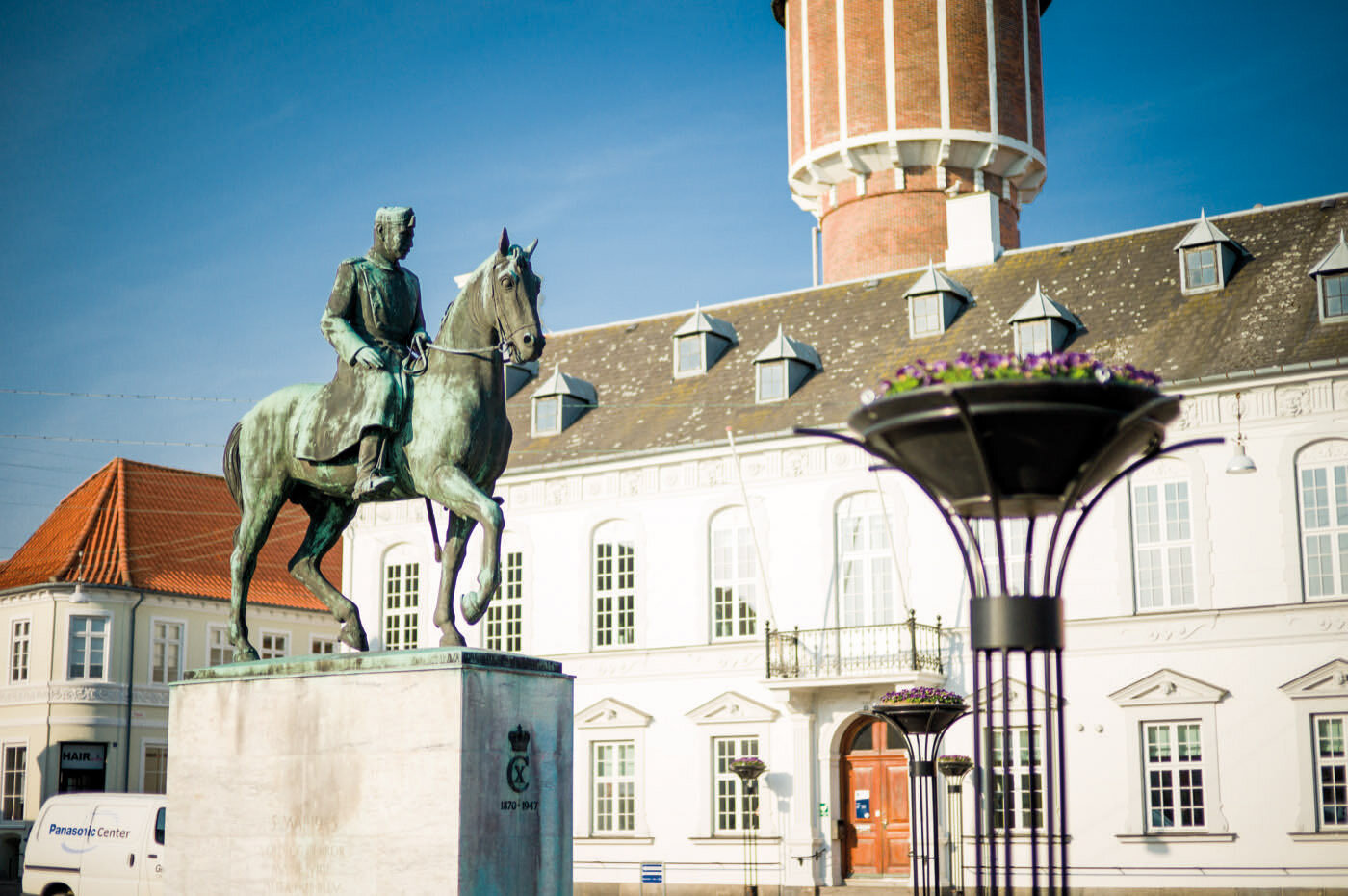
Nakskov is a beautiful market town from the Middle Ages, with cozy historic urban environments where you will find half-timbered buildings, cobblestones and hollyhocks.
Nakskov was granted market town privileges in the mid-13th century. The town was of great importance, as it had both a fertile catchment area and an important connection to sea-side trade and fishing, as well as a strategic advantage in the fjord that made it easy to defend the town.
The historic city center
Nakskov is one of Denmark's old medieval market towns, and this is clearly visible in the town centre, where land registers and street layouts still have a medieval feel. Nakskov is also one of the country's best-preserved market towns with a long line of beautiful merchant farms and homes, several of which date back to the 17th century and some even further back. The quality and quantity of properties worthy of preservation make Nakskov completely unique and provide good opportunities for development of the urban environment.
The Straits
Between the city and the harbor you will find a number of cozy little alleys. Bibrostræde, Tolderensstræde and Kongenstofte are especially beautiful, but also inside the city in Kattesundet, among others, you will find some cozy places to explore, with exciting little details to explore.

The water tower
The characteristic water tower can be found just behind the old town hall building. Originally the tower dates from 1884 but was rebuilt and raised in 1923.
Theisen's Farm
Between Axeltorv and Havnegade, behind Det Gamle Apotek, you will find the listed farm complex with several beautiful half-timbered buildings and warehouses. The farm is used for festivals and a Christmas village, among other things.

Saint Nicholas Church
The church has been rebuilt several times and probably dates from the 13th century. During the Middle Ages, Nakskov grew to become the region's most important market town, and therefore a major expansion of the church was initiated in the 15th century. After that, work was stopped for almost 200 years. It was not until 1653 that the work was completed.
During the Swedish Wars in 1659, on Sunday 19 June, the town was shelled during a church service and a cannonball fell through the choir vault. Part of the shell has been preserved and can be seen in the church, and the spot where it hit is marked with a black round plate.
Axeltorv and the town hall
Axeltorv in Nakskov, with its unique triangular shape, is one of the few squares in Denmark that has preserved the original row of houses all the way around, where all the houses are more than 100 years old. The most dominant building on the square is the old town hall, which was built in 1876, although the site has been a town hall several times before in history. When the municipality merged in 2007, when Nakskov Municipality was merged into Lolland Municipality, the town hall functions moved to Maribo. In 2018, the Danish Building Agency purchased the town hall and the Nota Library for the Blind moved in as part of the plan for the relocation of government workplaces.
The old pharmacy
The old pharmacy is one of Nakskov's most interesting buildings. The current front building with its impressive Baroque facade was built in 1777. If you go through the gate and into the courtyard, you will see the old gabled house from just after 1645, when Frederik III granted Nakskov a pharmacy license. In 1995 the pharmacy closed and today there is a tourist office in the old pharmacy.








